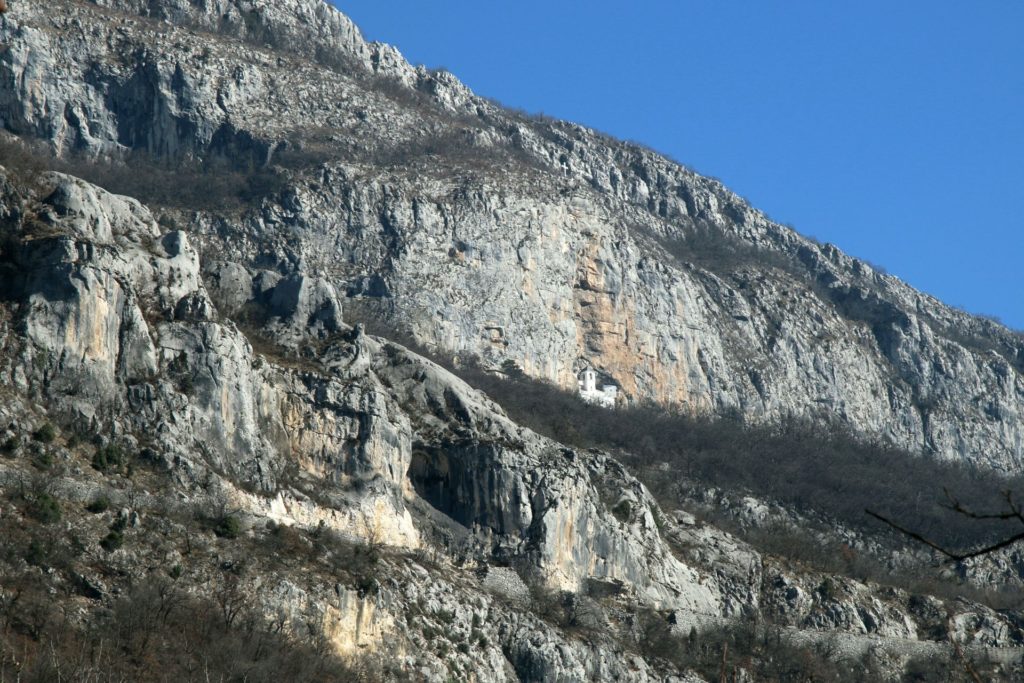 The fertile Bjelopavlići plain or Zeta river valley does not offer major tourist attractions. Yet, those travelers interested in exploring this beautiful region in Central Montenegro will be pleasantly surprised: this is where they can discover the beauties of the emerald green Zeta river meandering through the valley, old Turkish bridges, small water power plants, typical examples of rural architecture, and even important archeological excavations (see my blog post: Along the Zeta river: Turkish bridges and a Bronze Age tombstone)
The fertile Bjelopavlići plain or Zeta river valley does not offer major tourist attractions. Yet, those travelers interested in exploring this beautiful region in Central Montenegro will be pleasantly surprised: this is where they can discover the beauties of the emerald green Zeta river meandering through the valley, old Turkish bridges, small water power plants, typical examples of rural architecture, and even important archeological excavations (see my blog post: Along the Zeta river: Turkish bridges and a Bronze Age tombstone)
Of course, a trip to Bjelopavlići could also include a visit of the famous Ostrog monastery (see Round trip with visit to the Ostrog Monastery), which can be seen from the valley as a tiny spot in the barren rocks where it was built, high above the plain.
After the extremely low temperatures this winter, we could not wait for the spring to come, so on a sunny day in February we went off for a tour through the Zeta river valley, following the old road from Danilovgrad to Nikšić. As the climate is mild in these fertile lowlands, I was sure that we would discover many early spring flowers.
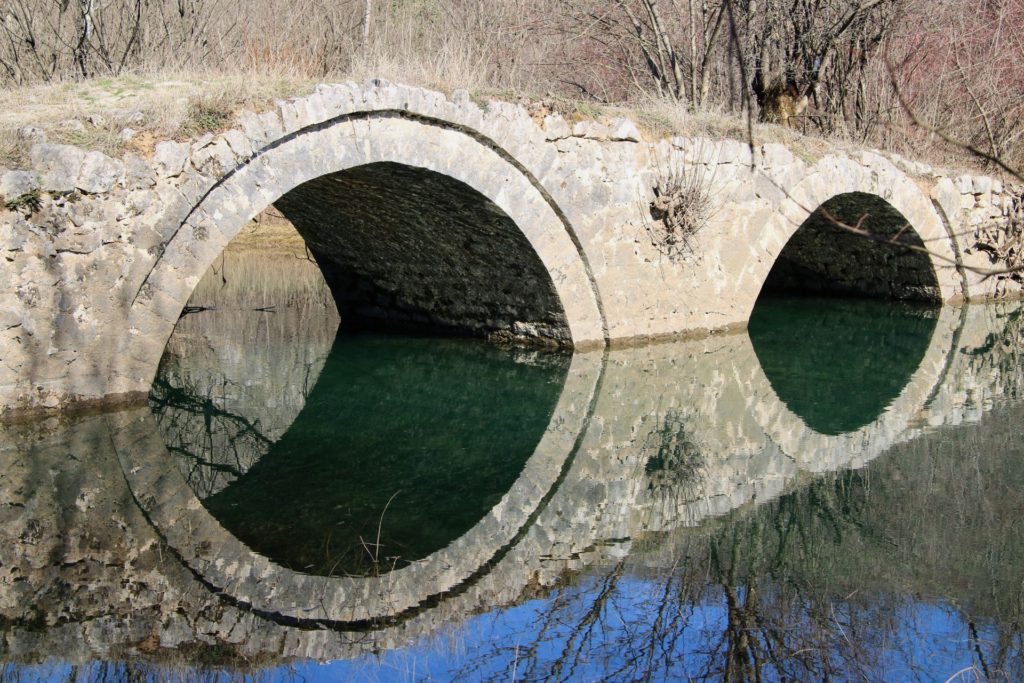 But let me tell you something about the history of Bjelopavlići. The region owes its name to its eponymous founder Bijeli Pavle (“White Paul”) and was first mentioned in a document from Dubrovnik (1411). Although there are different stories about the origin of Bijeli Pavle, most people believe that he fled Metohija from the Ottomans. Was Bijeli Pavle a Serb or an ethnic Albanian? Nobody knows for sure, as there is no written document about him or his life, but there is plenty of evidence that Bijeli Pavle was of Serb origin.
But let me tell you something about the history of Bjelopavlići. The region owes its name to its eponymous founder Bijeli Pavle (“White Paul”) and was first mentioned in a document from Dubrovnik (1411). Although there are different stories about the origin of Bijeli Pavle, most people believe that he fled Metohija from the Ottomans. Was Bijeli Pavle a Serb or an ethnic Albanian? Nobody knows for sure, as there is no written document about him or his life, but there is plenty of evidence that Bijeli Pavle was of Serb origin.
We made a stop at Bulin most (Bula’s bridge; a bula is a Muslim woman) that is situated in the vicinity of the water power plant Slap Zete. This small bridge is very special, as it has two arches of a different size. The legend says that it was built by the wife of Adžija, architect of the Adžijin bridge that is located 2 kilometers farther. It is rather weird that this bridge is sometimes also called the bridge of “Queen Helen of Anjou”.
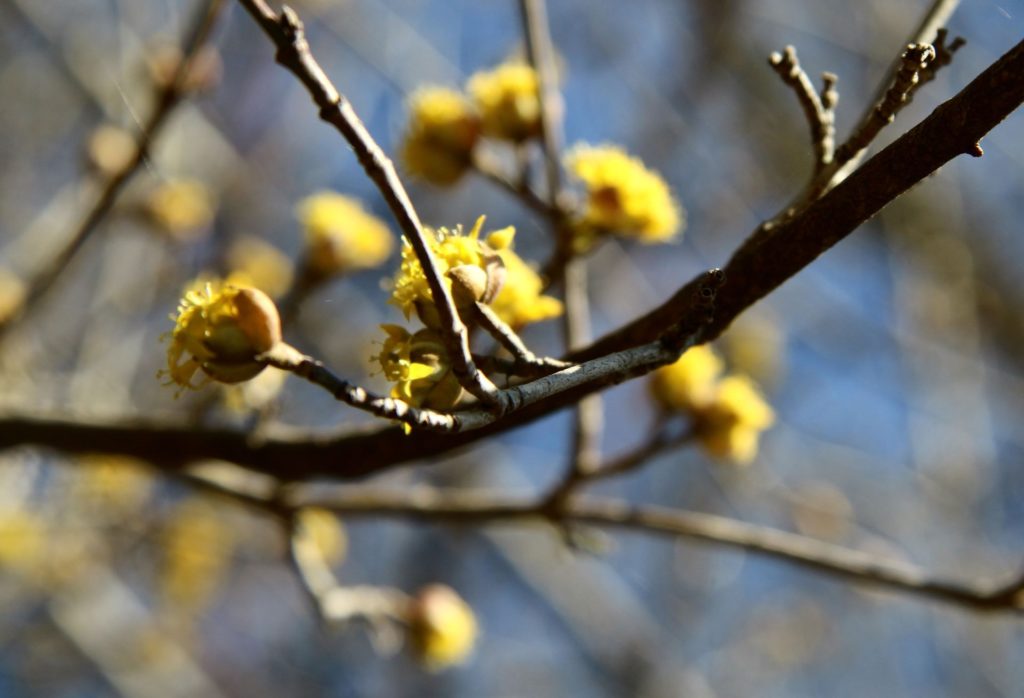 Walking over the old cobblestone footpath, we could see how the asymmetric arches of the bridge created a perfect mirror image in the transparent blue water. The trail was covered with snowdrops and crocuses, and we enjoyed the first yellow blossoms of cornelian cherry trees.
Walking over the old cobblestone footpath, we could see how the asymmetric arches of the bridge created a perfect mirror image in the transparent blue water. The trail was covered with snowdrops and crocuses, and we enjoyed the first yellow blossoms of cornelian cherry trees.
In a region without proper signposts, as there are many in the continental part of Montenegro, the only way to learn where you can find interesting places is taking your time and exploring the local roads.
So we turned right and followed a narrow asphalt road passing though different hamlets and villages along the foothills of Ostroška Greda.
Many village houses and farms seemed to be abandoned. Do the villagers use them during the weekends only?
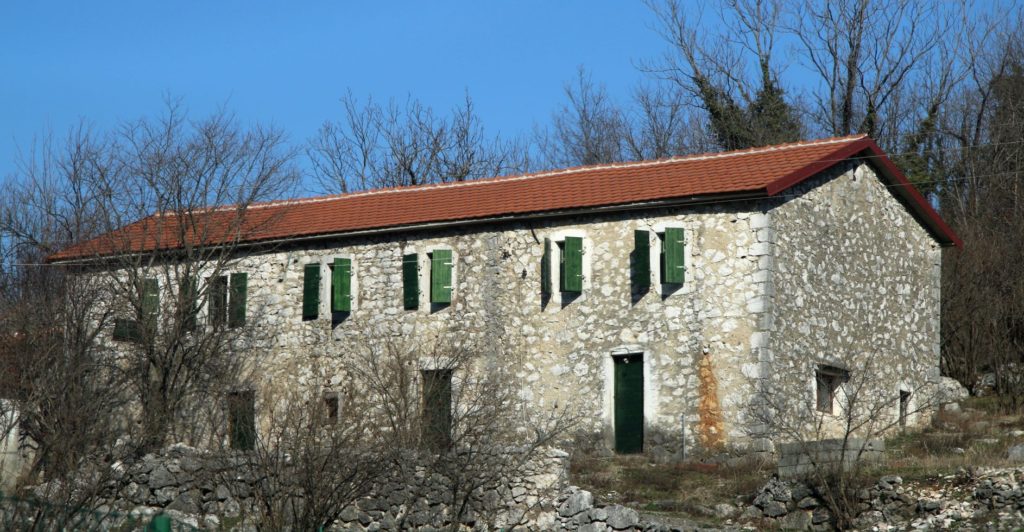 It was interesting to see the typical architecture of the old stone houses. As in many other areas of Montenegro, they were mostly built against a hill. The first floor had small windows and was intended for living, while the basement served for cattle and as food/wine store room. It is such a pity that these traditional houses gradually disappear from the countryside…
It was interesting to see the typical architecture of the old stone houses. As in many other areas of Montenegro, they were mostly built against a hill. The first floor had small windows and was intended for living, while the basement served for cattle and as food/wine store room. It is such a pity that these traditional houses gradually disappear from the countryside…
Roaming through the karst landscape under the Ostrog Monastery, we finally got back to the road. The wooden suspension bridge near Dobro Polje led us to the other side of the Zeta river (without any litter!): fertile lowlands with orchards, gardens and fields, situated between the river and the highway Podgorica-Nikšić.
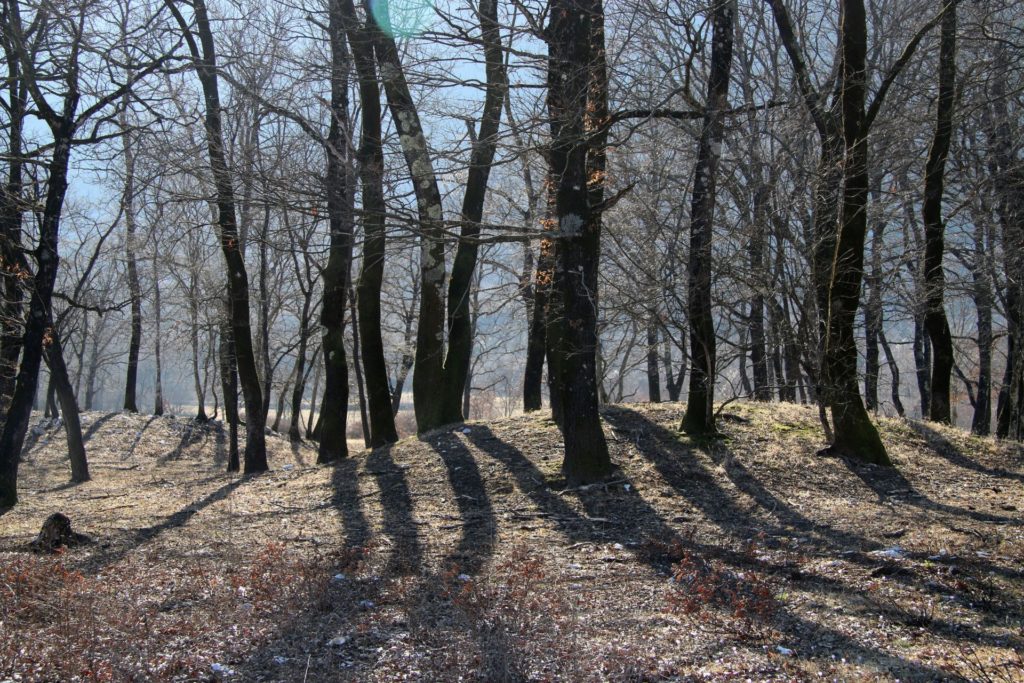 We explored the villages of Kujava and Frutak, where a grave from the early Bronze Age was discovered a few years ago. The landscape changed: mysterious forests alternated with arable land, big trees covered with ivy surrounded the ruins of typical old stone houses.
We explored the villages of Kujava and Frutak, where a grave from the early Bronze Age was discovered a few years ago. The landscape changed: mysterious forests alternated with arable land, big trees covered with ivy surrounded the ruins of typical old stone houses.
Although archeologists established that there are several other tombstones to be found under shallow hills in the immediate surroundings, it was clear that further investigation has not started yet. It was a strange feeling to think of the people who lived here 4000 years ago… Who were they? Where did they come from?
The mysterious atmosphere was enhanced by the typical architecture. The ruins of old houses and walls showed that they had been made of a special type of stone: flattened, grey-brown and often overgrown with ivy.
 Where does this building material come from? It looks so different from the usual big stones that are used for houses and dry-stone walls elsewhere in Montenegro!
Where does this building material come from? It looks so different from the usual big stones that are used for houses and dry-stone walls elsewhere in Montenegro!
Returning to the suspension bridge, we took a road that passed high above the river banks, from where we had a wonderful view of the river and the surrounding mountains. Carpets of crocuses covered the soil among the trees. Yes, spring is in the air!
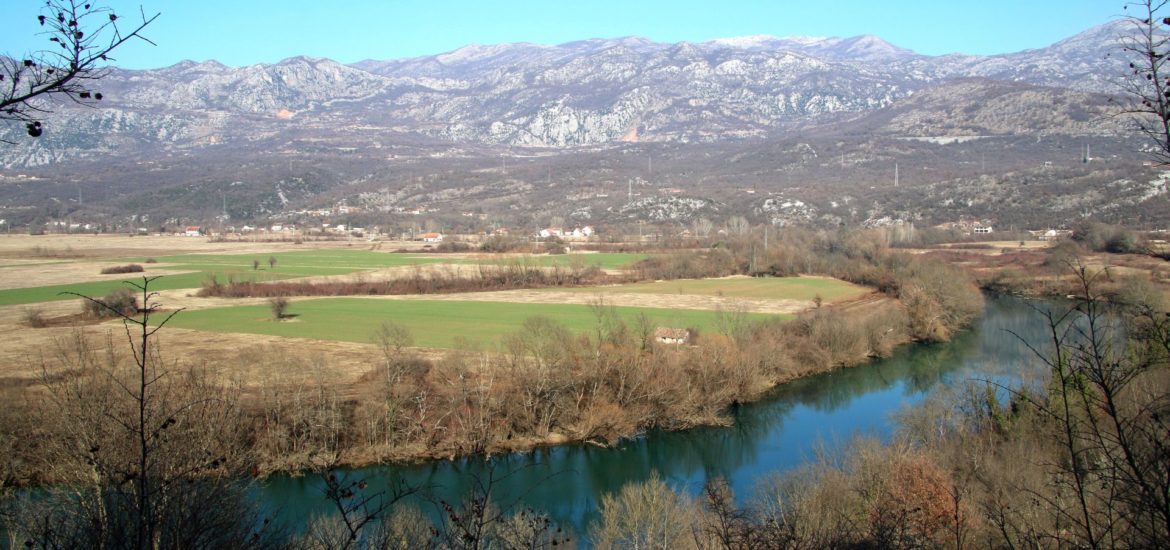
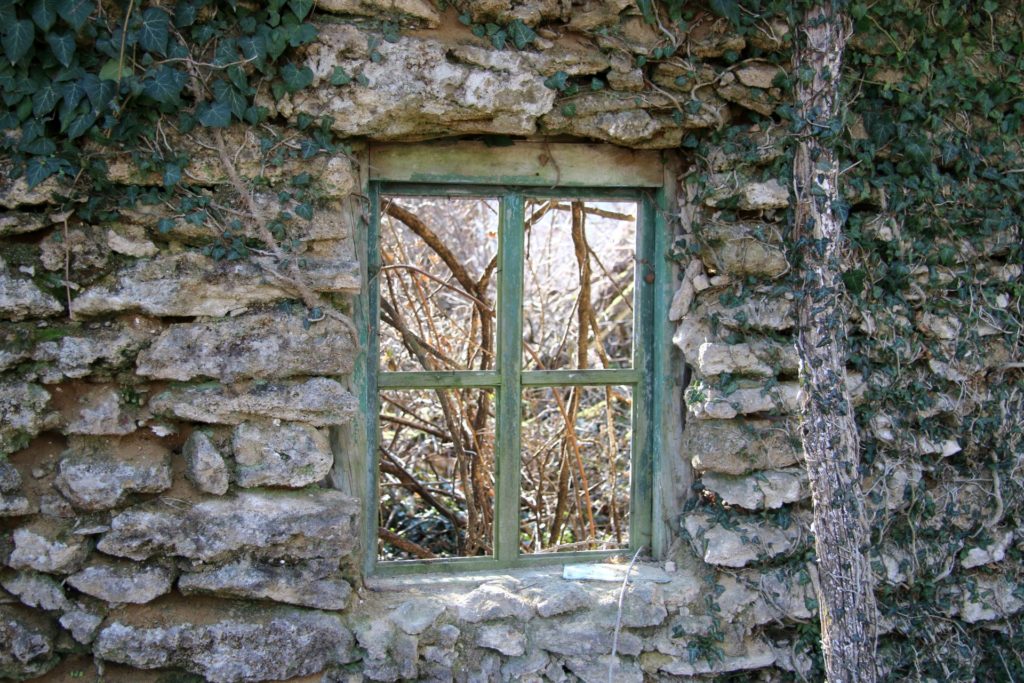
[…] I am aware that Bjelopavlići is not exactly the most attractive tourist region in Montenegro, I have made many nice trips […]